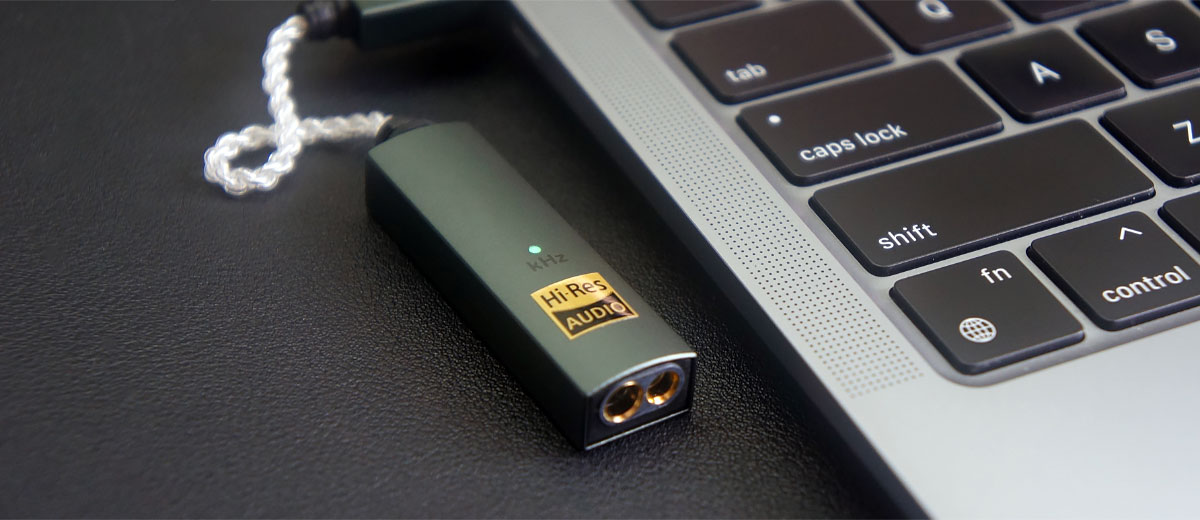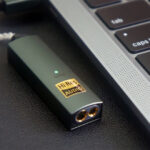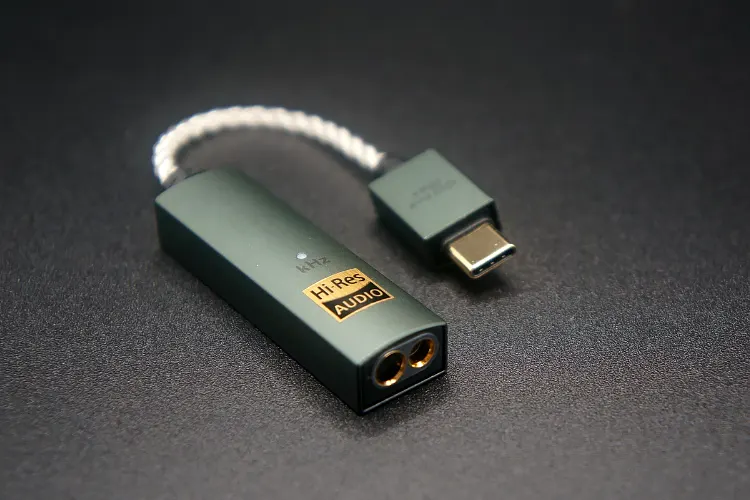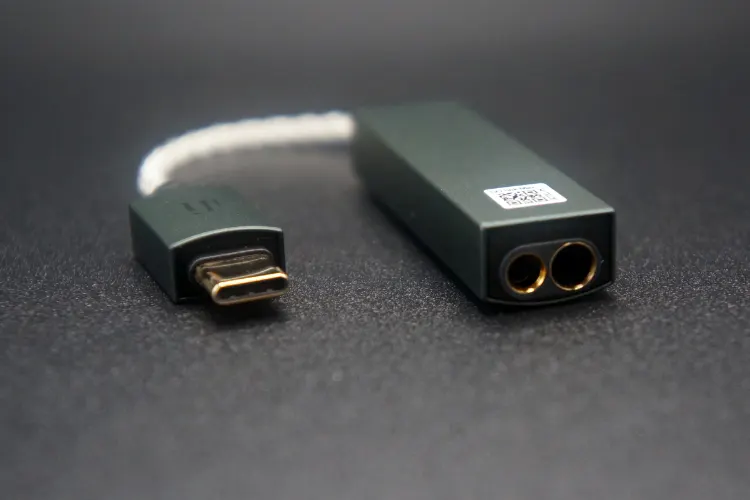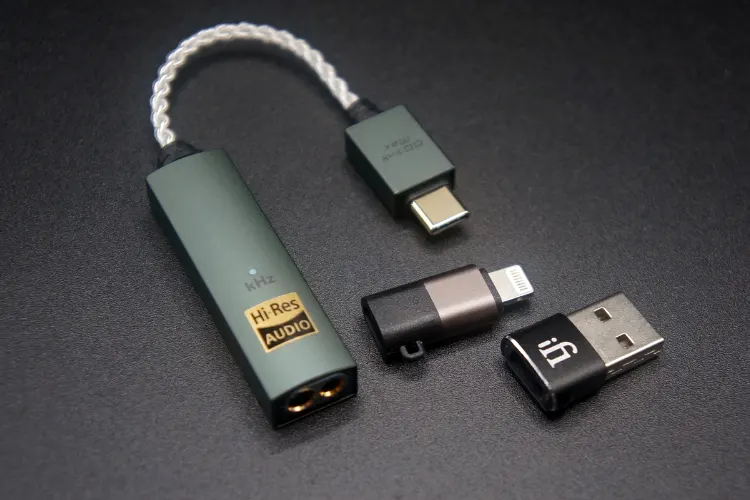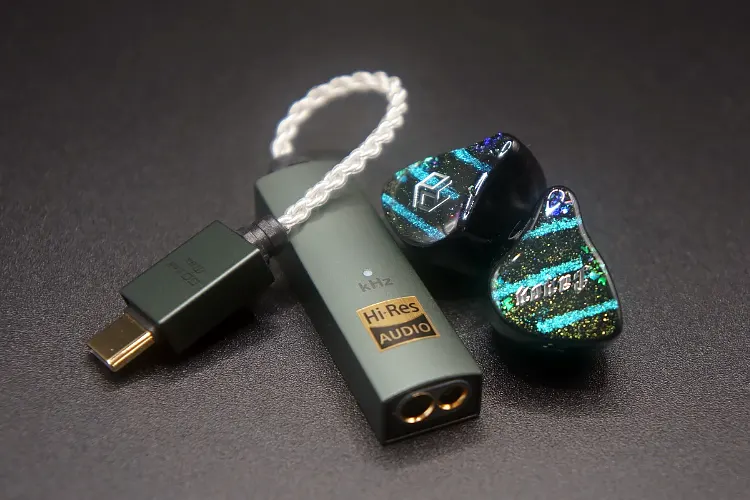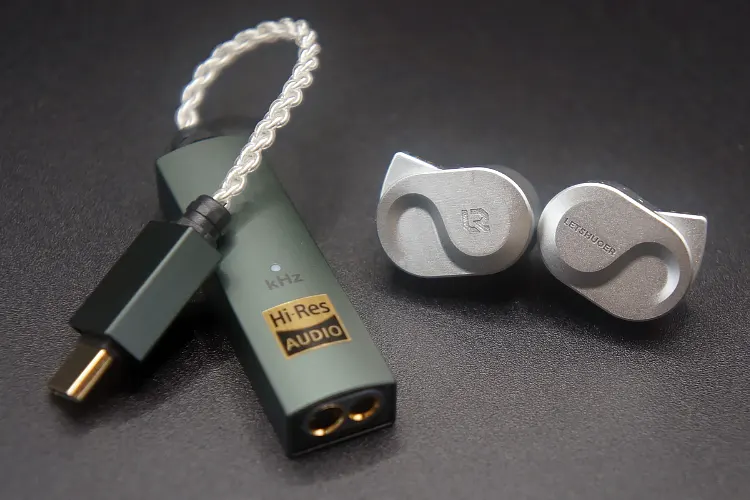Today’s feature from Meldrick is a review of the iFi audio GO link Max, a compact and affordable DSD256 and 241mW capable balanced dongle DAC. It is priced at $79.
Disclaimer: I received this sample in exchange for my honest opinion. Headfonics is an independent website with no affiliate links or services. I thank iFi Audio for their support.
Click here to read up on other iFi Audio products we have previously reviewed on Headfonics.
This post adheres to our current scoring guidelines, which you can find here.
iFi audio as a brand needs no introduction, primarily because of their steady release of class-leading portable and desktop amplifiers and sources such as the ZEN DAC and ZEN CAN.
They have now added a new entry into their budget-friendly GO line of portable dongles: the GO link Max, priced at $79.
By cramming a 4.4mm Balanced output and dual ESS DACs into such a compact form factor, iFi audio is billing their latest release as “the ultimate portable solution”.
To see if the GO link Max lives up to these lofty expectations or falls flat against the LETSHUOER DT03 or FiiO’s BTR13, read my full thoughts and impressions below.
Features
The iFi audio GO link Max is a tiny balanced designed dongle DAC with a pair of Sabre ESS 9219 DACs tucked inside. This DAC configuration lets the unit natively decode up to PCM 384kHz and DSD256.
The GO link Max further optimizes the DAC Chips’ capabilities by implementing their Dynamic Range Enhancement (DRE) technology alongside iFi’s in-house enhancements.
This gives the GO link Max dongle an additional 6dB dynamic range, highlighting the audible difference between the loudest and softest sounds within a mix.
Lastly, the GO link Max has an impressive 241mW of balanced output power. Given it is not much bigger than some of the smallest USB Flash drives, the ability to pack this much power in such a compact form factor means almost all IEMs and a wide range of headphones will pair just fine with it.
Design
It cannot be overstated how small the iFi audio GO link Max is compared to other balanced dongles such as the Tempotec Sonata BHD Pro and LETSHUOER DT03.
Coming in at 150mm x 15mm x 10mm, I had no problem storing the dongle in the included cases of most IEMs, nor did I have any issue with it occupying too much desk space when plugged into my laptop.
The GO link Max comes in a 2-piece design with the main body being attached to the sole USB-C input via an attached cable.
The cable is constructed out of a two-wire weave and has very good anti-tangle properties. Even after twisting it in tight knots and angles during storage, the cable always easily reverted back to a straight position.
Both the main dongle body and USB-C Input shell are constructed from a lightweight metal alloy with a dark green matte finish. This gives it a sleek and refined finish that is never out of place as an everyday carry.
I/O
The iFi audio GO link Max keeps its inputs and outputs (I/O) refreshingly simple. With no buttons or knobs, the device is straightforward to set up and requires no additional drivers or software.
This minimalist design, however, means there’s no onboard volume or gain control. Volume adjustments must be made directly on your source device, whether a computer, phone, or tablet.
On the top of the dongle, the USB-C connector serves as its only input. For outputs, the unit provides a 3.5mm single-ended (SE) jack and a 4.4mm balanced (BAL) jack, catering to a variety of headphone and IEM configurations.
An LED indicator on the front provides clear playback feedback; yellow and green for PCM files and Cyan and Blue for DSD files depending on the sampling rate.
The light is dim enough to avoid distraction, even in indoor late-night listening while being bright enough to display when the unit is in use.
While the GO link Max’s connectivity options are modest, they are well-suited for users whose gear aligns with the available input and output ports. The device excels at getting you up and running with your music quickly and without hassle.
Packaging & Accessories
The GO link Max comes in a simple white box that includes:
- The dongle itself.
- A USB-C to USB-A Adapter
- A USB-C to Lightning Adapter
Despite its simplicity, the GO link Max provides all the essentials for compatibility with most sources. I particularly appreciated the inclusion of a USB-C to Lightning adapter, which allowed me to effortlessly connect the GO link Max to my iPhone 14.
Additionally, the USB-C to USB-A adapter is a thoughtful addition, ensuring seamless compatibility with older laptops and desktop motherboards straight out of the box.
Sound Impressions
All testing and comparisons were done through 4 pairs of IEMS, namely the Moondrop Blessing 3, Yanyin Canon II, 7Hz Aurora, and the LETSHUOER S08, as well as the Sennheiser HD580 Precision full-sized headphones.
Bass
The GO link Max has a sound signature that leans towards the upper mid-range and treble region, giving it a lean-sounding bass response that lacks some texture and impact.
Kick drums and other instruments in the sub-bass region present more as a “thump” rather than the deep, impactful slams I’ve experienced with other dongles. Even on acoustic tracks, the GO link Max’s sub-bass feels somewhat lacking in presence and depth.
In bass-heavy genres like modern hip-hop, the GO link Max manages to articulate a fair amount of texture in the sub-bass. However, it falls short of delivering the dynamics needed for a truly satisfying listening experience.
Unfortunately, the mid-bass performance is similarly underwhelming. Bass guitar strums lack weight and sound thin, resembling pitched-down acoustic guitars rather than full-bodied bass lines. This absence of heft diminishes the richness and spaciousness typically expected in a lush soundscape.
These shortcomings are not too noticeable when listening to more stripped acoustic tracks, however, they become glaringly obvious when listening to modern pop music, or mid-bass-reliant genres such as funk and disco.
Mids
The GO link Max excels in its handling of string instruments, making it one of the device’s standout features. Each guitar strum is delivered with impressive detail and pleasing harmonics, offering a clean and precise presentation that enhances the track without overshadowing other midrange elements.
Acoustic string instruments and keys, in particular, are rendered with energy, shining in well-mastered, instrument-heavy arrangements.
The unit’s lean bass response further complements this clarity by preventing any low-end bleed into the midrange, preserving a clean and balanced sound.
Vocals take a seat on the GO link Max compared to the other instruments within the mid-range.
Vocal performances are by no means muffled or overshadowed, however, they do not share the same note weight and dynamics of keys and string instruments, taking some of the focus away from the vocalist in complex acoustic mixes.
Treble
The GO link Max offers a lively and well-defined treble response, with hi-hats, cymbals, and chimes sounding crisp and distinct. This treble clarity adds a sense of brightness and openness to tracks, while giving tracks an infectious sense of energy.
In pop tracks, the treble sparkle enhances engagement, creating a dynamic and vibrant listening experience. Higher-pitched female vocals are rendered with a delicate shimmer and a smooth, pleasing tone.
Percussive hits on the higher end of the frequency spectrum, such as snare drums, are presented with forwardness and detail.
The GO link Max occasionally verges too close to sibilance, especially when paired with more neutral IEMs. However, I never experienced any long-term fatigue throughout my testing with the unit.
Staging & Dynamics
The GO link Max delivers a decent staging performance for a dongle, demonstrating an impressive ability to position string instruments within the soundscape, especially in more stripped-down acoustic tracks.
In more complex pop tracks, the GO link Max struggles with layering different high-pitched synths of similar frequencies, occasionally blending them into jumbled tones.
The GO link Max dynamics are decent as well despite its sub-par sub-bass response. I never found mixes to sound too compressed. Instead, each instrument within the soundscape sounded like it had enough room to breathe and sound clear.
Synergy
Power
The iFi audio GO link Max has an impressive power output of up to 241 mW into 32Ω via the 4.4mm balanced output and a respectable 100mW into 32Ω via the 3.5mm output.
Even on its single-ended output, the GO link Max had more than enough power to drive the Yanyin Canon II and LETSHUOER S08 with a decent amount of headroom.
When paired with my MacBook Air, it drove the Canon II via its SE jack to a listenable level while at about 33% of its maximum output.
Even on its 4.4mm output, the GO link Max was capable of driving my Sennheiser HD580 Precision headphones.
It was able to drive them to a listenable volume while at 50% output, but the detail in the upper mids and highs sounded metallic and shrill, giving the headphones a more fatiguing tonality.
Pairings
I found that the GO link Max pairs best with IEMs that have a warm or V-shaped sound signature, letting the IEM’s boosted bass response compensate for the GO link Max’s lean low-end.
Amongst all the IEMs I’ve tried, I found that the GO link Max paired best with the S08 and Canon II
Pairing the GO link Max with the Canon II was a revelation. I never found the bass response to be lacking, but the superior string harmonics of the GO link Max were easily audible on the V-shaped Canon II.
This allowed the IEM to maintain its fun-sounding signature while boosting its technical resolving performance. Safe to say, this will be my ideal Yanyin Canon II pairing moving forward.
The S08’s warmth was able to even out the lean mid-bass presentation of the GO link Max while maintaining a clean mid-range that excelled in reproducing female vocals.
The Moondrop Blessing 3’s neutral tuning already had a conservative amount of low-end in the place, and adding the GO link Max’s lean bass performance simply made tracks feel too hollow and flat.

